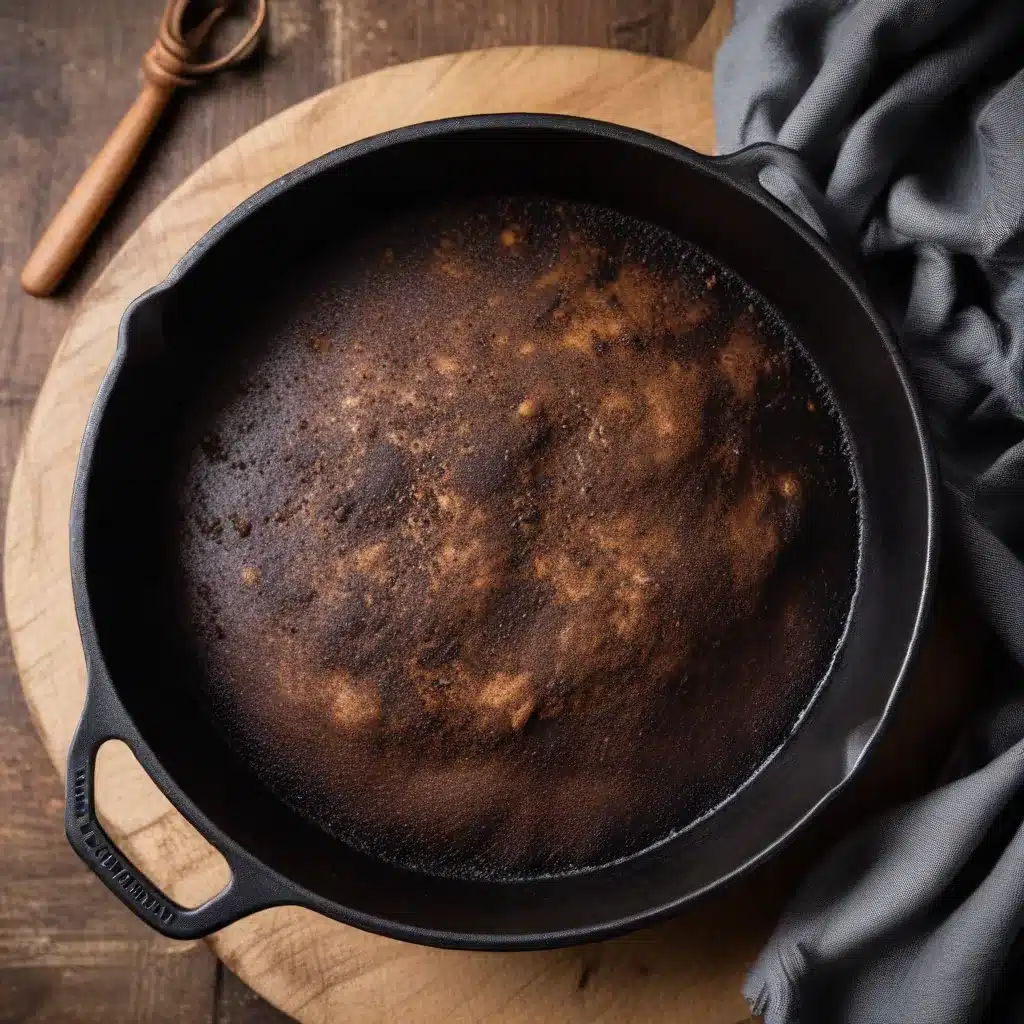
The Fundamentals of Cast Iron Skillet Seasoning
As a seasoned culinary professional, I’m often asked about the art of cast iron skillet seasoning. Many home cooks are intimidated by the process, believing it to be complicated and time-consuming. However, with a few simple steps and a bit of patience, you can achieve a flawless, nonstick finish on your cast iron that will have you cooking like a pro.
Let’s start with the basics. Seasoning a cast iron skillet refers to the process of building up a protective layer of polymerized oil on the surface of the pan. This layer not only prevents rusting but also creates a naturally nonstick surface that improves with each use. The key is to apply a thin, even coating of oil and then heat it to the point where the oil transforms from a liquid to a solid, durable coating.
Step-by-Step Guide to Seasoning Cast Iron
Follow these easy steps to season your cast iron skillet and unlock its full potential:
1. Start with a Clean Pan
Begin by thoroughly cleaning your cast iron skillet. Wash it with warm, soapy water and a stiff-bristled brush to remove any rust, food residue, or other impurities. Rinse the pan and dry it completely with a clean towel.
2. Apply a Thin Layer of Oil
Choose a high-heat, neutral-flavored oil like vegetable, canola, or grapeseed oil. Using a clean, lint-free cloth or paper towel, apply a very thin, even layer of oil to the entire surface of the pan, including the sides and bottom.
3. Heat the Pan
Place the oiled pan in a preheated oven at 400°F (200°C) for about an hour. This high heat will allow the oil to polymerize, creating a durable, nonstick coating. You can also use your stovetop by heating the pan over medium-high heat until the oil begins to smoke.
4. Allow the Pan to Cool Naturally
Once the hour is up, turn off the oven and leave the pan inside to cool completely. Avoid rushing this step, as the slow cooling process is crucial for the oil to properly set and bond to the pan’s surface.
5. Repeat as Needed
If you’re starting with a brand-new or recently stripped pan, you may need to repeat steps 2-4 several times to build up a solid layer of seasoning. The more you use and re-season your cast iron, the better the nonstick properties will become.
Remember, the seasoning process is not a one-and-done affair. It’s an ongoing maintenance task that will ensure your cast iron skillet remains in top condition for years to come.
Maintaining Your Cast Iron Skillet’s Seasoning
Once you’ve established a solid layer of seasoning, keeping it in tip-top shape is a breeze. Here are some tips for preserving your cast iron’s nonstick finish:
Cleaning
After each use, simply wipe the pan clean with a damp cloth or paper towel. Avoid using soap, as it can strip the seasoning. If you need to remove stubborn food residue, use a stiff-bristled brush and a bit of hot water.
Oiling
Once the pan is clean and dry, apply a thin coat of oil to the surface. This helps maintain the seasoning and prevents rusting. You can use the same high-heat oil you used for the initial seasoning.
Storage
Store your cast iron skillet with a light coating of oil to keep it protected. You can also place a paper towel or clean cloth inside the pan to absorb any moisture and prevent rust.
Reseasoning
If you notice the nonstick surface starting to deteriorate or the pan developing rust spots, it’s time for a quick reseasoning session. Simply repeat the steps outlined above to refresh the protective layer.
The Benefits of a Well-Seasoned Cast Iron Skillet
A properly seasoned cast iron skillet offers numerous advantages in the kitchen:
- Nonstick Cooking Surface: The polymerized oil creates a smooth, slick surface that allows food to easily release, reducing the need for excessive amounts of fat or oil.
- Improved Heat Retention: Cast iron heats evenly and holds onto heat exceptionally well, making it ideal for searing, frying, and baking.
- Enhanced Flavor: The seasoning can impart a subtle, savory flavor to your food, especially when cooking acidic or alkaline ingredients.
- Durability: With proper care, a well-seasoned cast iron skillet can last for generations, becoming a cherished kitchen heirloom.
- Nutrition: Cast iron cookware can leach a small amount of beneficial iron into your food, providing a natural nutritional boost.
By following the simple steps outlined in this guide, you’ll be well on your way to unlocking the full potential of your cast iron skillet. With a little effort and patience, you can enjoy the benefits of a flawless, nonstick cooking surface for years to come.
Conclusion
Seasoning a cast iron skillet may seem intimidating at first, but it’s a straightforward process that yields incredible results. By taking the time to build up a solid layer of seasoning, you’ll transform your cast iron into a versatile, high-performance cooking tool that will serve you well in the kitchen.
Remember, the key to success is consistency. Maintain your cast iron’s seasoning through regular use and proper cleaning, and you’ll be rewarded with a pan that only gets better with age. So, what are you waiting for? Grab your cast iron skillet and let’s get seasoning!
For more practical tips and in-depth insights on cooking, kitchen tools, and culinary techniques, be sure to check out the Kitchen Warrior blog. Happy cooking!


